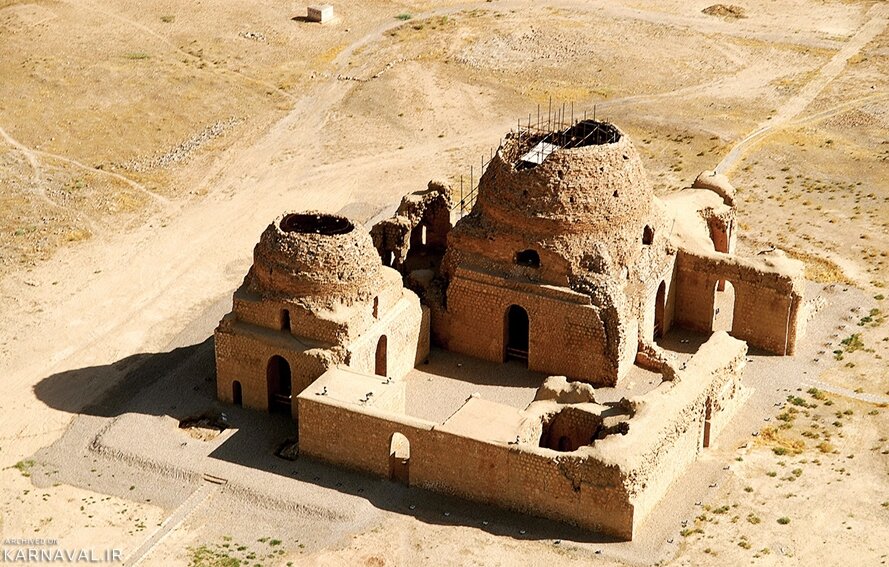Ruins of Sassanid palace in southern Iran to undergo restoration, reorganization project

TEHRAN - The Sassanian Sarvestan Palace, one of Iran’s key historical sites from the Sassanid era, is undergoing restoration and reorganization efforts.
On Sunday, Mohammad Sabet-Eqlidi, the tourism chief of Fars province, announced that more than 20.65 billion rials (some $45,000) from government funds has been allocated for the preservation and renovation of the once-top royal monument.
One of the key projects underway is the construction of a dual-purpose pathway, serving both protective and tourist needs, ISNA reported.
“This project will include the installation of stairs leading to the top of the palace’s brick dome, allowing visitors a unique vantage point to observe the interior of the palace from above.”
The aim is to enhance the visitor experience while ensuring the protection of the historic structure, Sabet-Eqlidi noted.
The Sarvestan Palace is part of the “Sassanid Archaeological Landscape of Fars Region,” which was added to the UNESCO World Heritage list in 2018. The ensemble, consisting of eight archaeological sites across Firuzabad, Bishapur, and Sarvestan, highlights the sophisticated use of natural topography in Sassanian architecture. It also showcases the cultural influences of earlier Achaemenid and Parthian traditions, as well as Roman art, which later shaped the architecture of the Islamic era.
Renowned for its intricate architectural features, the Sarvestan Palace continues to draw the attention of archaeologists, architects, and art historians, cementing its importance as a symbol of Sassanid innovation and influence in Persian cultural heritage.
The Sarvestan Palace, located in Sarvestan country of Fars province, is a remarkable testament to Sassanid architecture and Persian heritage. The palace serves as an architectural marvel showcasing the grandeur and sophistication of the ancient Persian civilization. It consists of a central hall flanked by two symmetrical chambers and surrounded by a perimeter wall. The main hall, adorned with elaborate stucco decorations and inscriptions, is a testament to the Sassanid artisans’ mastery of craftsmanship.
The Sassanid era (224-651 CE) is of very high importance in the history of Iran. Under Sassanids, Persian art and architecture experienced a general renaissance. Architecture often took grandiose proportions such as palaces at Ctesiphon, Firuzabad, and Sarvestan which are amongst the highlights of the ensemble.
Crafts such as metalwork and gem-engraving grew highly sophisticated, yet scholarship was encouraged by the state. In those years, works from both the East and West were translated into Pahlavi, the language of the Sassanians. Rock-carved sculptures and bas-reliefs on abrupt limestone cliffs are widely deemed as characteristics and striking relics of Sassanian art, top examples of which can be traced at Bishapur, Naqsh-e Rostam, and Naqsh-e Rajab in southern Iran.
Experts believe that efforts to preserve and restore the Sarvestan Sassanid Palace are crucial for safeguarding this invaluable piece of Persian history and ensuring that future generations can continue to marvel at its beauty and architectural ingenuity.
AM
Leave a Comment